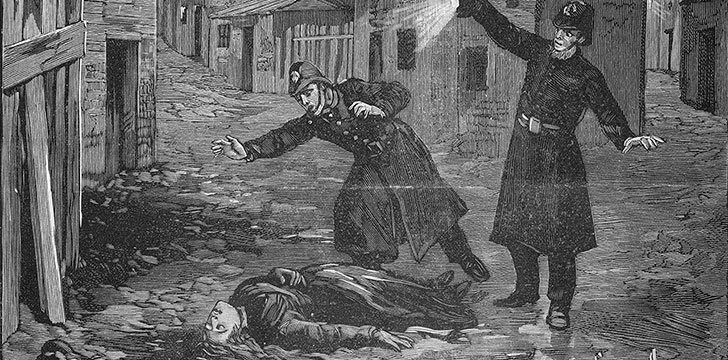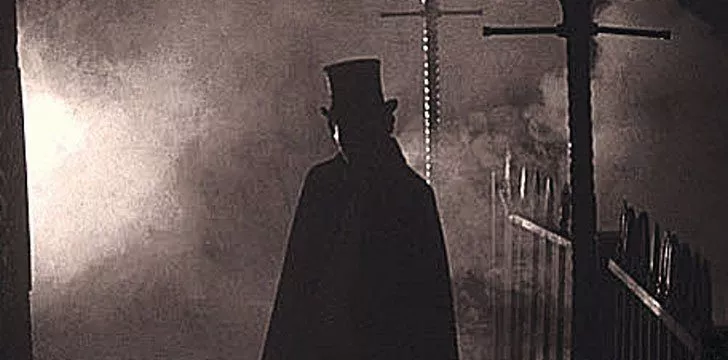By no means was Jack the Ripper the first serial killer. However, until this madman struck, his was the first case to stir up a worldwide media frenzy.
Even over 100 years later, everyone knows his nickname, and the mystery surrounding these attacks are scrutinized.
And that’s the million-dollar question: Who was Jack the Ripper?
If you were clicking on this article for a big reveal, unfortunately, we can’t give that to you.
No one can for certain! But we can take a look at his profile and the most likely suspects.
Guess who it was as much as you’d like, but don’t expect a definitive answer from anyone.
The Profile of a Killer.

If you didn’t already know, Jack the Ripper was an unidentified person who committed a string of horrific serial murders in 1888.
His signature included mutilation or dismemberment of the victims who were all women.
Due to the fact that he seemed to only target alcoholic prostitutes, authorities assessed that he was likely a male seeking easy prey.
As they put the pieces together, it was also figured that he was either abused or deserted by his mother when he was a child.
This was the most likely reason why he only killed women.
Based on the time of the murders, there are a few extra details we can ascertain.
The killings typically took place on the weekends, and only ever between the hours of 12 AM and 6 AM.
These facts break down to mean two things: he probably had a job, but was single and had no family ties.
How the cases tied together.

During the time of the Ripper killings, there was already a high amount of violence against women occurring in the same area.
In those days, the East End of London was considered the slums. A large number of attacks and murders happened specifically in the poverty-stricken district, Whitechapel.
A string of 11 murders occurred between April 1888, and February 1891. They were all performed in terrible methods, but five of them, in particular, were able to be tied together.
These women are considered the canonical five of Jack the Ripper. Any other victims are speculation and unable to be confirmed.
The other five women were considered acts of gang violence. Similarly, no one was caught for these crimes either, so it is impossible to rule out Jack the Ripper for these as well.
However, the canonical five all shared the same detail: they were killed by their throats being slit.
For four of them, other awful wounds and mutilations were inflicted.
But for the other, she only had one laceration and it is theorized that the Ripper may have been interrupted before he could carry out any other abominations.
Even though these five had a connection, there is still no sure way to tell if Jack had other victims or not.
The Search for a Maniac.

During this hunt, over 2,000 people were interviews, 300 plus were investigated, and 80 were detained.
It was determined by the lacerations on the victims, that the killer had knowledge of human anatomy and thus could potentially be either a butcher or work in the medical field.
As a result, 76 butchers and slaughterers were visited, and the examination of all the employees included the last 6 months.
The case remained open until 1892, when the authorities officially closed the file based on lack of evidence and success, making it one of the greatest unsolved crimes ever.
The Unusual Suspects.

Today, there are over 100 hypotheses regarding Jack the Ripper’s true identity. Those who study about Jack the Ripper are called “Ripperologists”.
Their theories range from people like Winston Churchill’s dad, the author of Alice in Wonderland, Lewis Carroll, and the grandson of Queen Victoria.
Some have even speculated that Jack the Ripper was in fact Jill the Ripper.
Specifically, one Mary Pearcey was caught and executed in 1890 for butchering her lover’s wife and child in a similar style to the Ripper.
Unfortunately, there isn’t enough surviving forensic evidence about the case to determine any of these theories. However, we can narrow it down to the top 5 most likely.
Was it Montague John Druitt?

Starting with bachelor number one! Montague John Druitt didn’t have any scientific or concrete evidence convicting him, but the timeline of his life is eerily close.
Druitt lived only a few miles away from the location of the murders in Whitechapel, and it was reported that he was seen in the area around the same time as the Ripper murders.
Even though he was a well-educated man coming from Oxford, many believed him to be “sexually insane” which would be a factor in the mutilations of the women.
The biggest factor for believing it was Druitt, is the fact that Druitt’s body was found just seven weeks after the probable last victim of Jack the Ripper.
He was found at the bottom of the River Thames, his death ruled a suicide. Is it possible that after Montague’s last strike, he went fully insane and killed himself?
Was it Carl Feigenbaum?

While experts believe Jack was in his mid-20’s to mid-’30s, this next suspect is an exception.
Carl was a 54-year old German sailor who was documented working near Whitechapel every single night of the five main murders.
While docked in the area, he was usually spotted at nearby brothels to add to the possibility.
Even worse, he was known to be a psychopath and confessed to mutilating women. Even his own lawyer was convinced his client was Jack the Ripper!
Around 1890, Carl emigrated to America where he was convicted of murdering a woman and sent straight to the electric chair.
Ripperologists say there are many prominent likenesses to the Ripper murders and Carl’s victims in the States.
Was it Francis Craig?

Recently, many people have come to believe that the Ripper was in fact the husband of one of the victims.
Francis Craig was a reporter during the murders, covering the police courts and investigations on crimes in the East End where the murders took place.
Some have suggested that Craig had a personality disorder, such as schizotypal.
He only lived a few minutes away from the first murder scene of Jack the Ripper, which gives him the convenience of killing in his area.
Craig married Elizabeth Davies, who is believed to have an alias for being a prostitute – Mary Jane Kelly, Jack the Ripper’s last victim.
Ripperologists say that when Craig found out his wife was working as a prostitute, he started planning her murder.
He only killed the four other women in order to cover up his involvement.
Was it Walter Sickert?

Walter Sickert was notorious for painting prostitutes. Some say he would add clues and symbols into his artwork about the Jack the Ripper killings.
Professionals claim that the resemblances are so similar to the real crime scenes, that only the real murderer could have painted them.
While there is less evidence against him than some of the other accusations, the similarities of his painting are too close to ignore.
Was it Aaron Kosminski?

There are many highly-regarded police officers that hold firm to the polish barber, Aaron Kosminski as being the Ripper.
Russian-born, Kosminski moved to London in the early 1880s and was living in Whitechapel during the murders, working as a hairdresser.
In fact, he was known to be misogynistic with homicidal tendencies and was sent to an asylum in 1889.
During the murders, Aaron was among the few primary suspects.
A witness even said he was the person attacking one of the victims, however, they declined to testify. There was never any hard evidence, so an arrest was impossible.
One thing that has always tied Aaron to the killings, is a shawl that was found at the scene of one of the victims, Catherine Eddowes.
The shawl was covered in blood and it was originally thought to be Catherine’s.
However, one researcher claims that the quality was too expensive to have been owned and worn by a London prostitute of that time.
Meaning: the shawl may have belonged to Jack the Ripper.
Later, the fabric was found to have been made in Russia. During the time of Kosminski living in Poland, it was under Russian control and normal for Russian goods to be traded there.
Additionally, Aaron’s mitochondrial DNA was found on the shawl.
However, that doesn’t to much in the case of proving anything, because this type of DNA is likely to match with many other people’s.
So who done it?

Based on the information above, who do you believe to be the most likely suspect?
Personally, it’s hard to ignore that Druitt killed himself shortly after the last victim, but with all the evidence against the other men, it’s difficult to narrow down.
It is widely believed that after the final killing, the Ripper stopped due to his death, imprisonment, emigration, or institutionalization.
We will probably never have a definitive answer to this question, but it is still fascinating to research.
Whoever Jack the Ripper was is long gone, and only he will ever know the full truth.


















